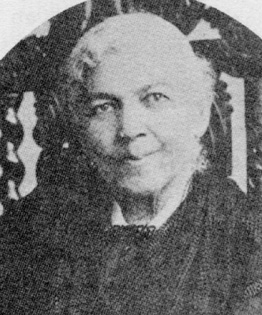|

|
Chapter 3:
Nineteenth Century to 1865
Romanticism
Harriet Ann
Jacobs
1813-1897
|
©
Paul P. Reuben
September 12, 2019
E-Mail
|
Page Links: | Primary
Work |
Selected
Bibliography 1980-Present
| Study
Questions |
MLA Style
Citation of this Web Page
|
Site Links: | Chap
3: Index
|
Alphabetical
List
|
Table
Of Contents
|
Home
Page
|

Source: Legacy
Photo Gallery
Primary
Work
Incidents in the
Life of a Slave Girl. Told By Herself (using the name Linda
Brent), ed. Lydia Maria Child, 1861; republished as The Deeper
Wrong. Incidents in the Life of a Slave Girl, 1862.
Incidents in the Life
of a Slave Girl Written by Herself. Cambridge: Harvard UP,
2000.
Selected
Bibliography 1980-Present
Andrews, William L. To
Tell a Free Story: The First Century of Afro-American
Autobiography, 1760-1865. 1986.
Connor, Kimberly R. "Truth
and Talent in Interpreting Ethnic American Autobiography: From White
to Black and Beyond." in Long, Lisa A. ed. White Scholars/African
American Texts. New Brunswick, NJ: Rutgers UP, 2005.
Fleischner, Jennifer.
Mastering Slavery: Memory, Family, and Identity in Women's Slave
Narratives. NY: New York UP, 1996.
Johnson, Yvonne. The
Voices of African American Women: The Use of Narrative and Authorial
Voice in the Works of Harriet Jacobs, Zora Neale Hurston, and Alice
Walker. NY: Peter Lang, 1998.
McEntee, Grace. "The Ethos
of Motherhood and Harriet Jacobs' Vision of Racial Equality in
Incidents in the Life of a Slave Girl." in Staub, Susan C. ed.
The Literary Mother: Essays on Representations of Maternity and
Child Care. Jefferson, NC: McFarland, 2007.
Sánchez-Eppler,
Karen. Touching Liberty: Abolition, Feminism, and the Politics of
the Body. Berkeley: U of California P, 1997.
Yellin, Jean F. Harriet
Jacobs: A Life. NY: Basic Civitas, 2004.
- - -. The Harriet Jacobs
Family Papers. Chapel Hill: U of North Carolina P; 2008.
Study
Questions
1. Compare and contrast
Linda Brent with Hester Prynne in The Scarlet Letter. See
especially the following quotation from Incidents that equates
unwed motherhood with stigma: "My unconscious babe was the
ever-present witness of my shame."
2. Write a paper comparing
Jacobs and Douglass and based on the following central quotations
from each narrative: "Slavery is terrible for men; but it is far more
terrible for women" (Jacobs) and "You have seen how a man was made a
slave; you shall see how a slave was made a man" (Douglass).
3. Explore the particular
obstacles Linda Brent faces and their significance for women at the
end of the twentieth century: sexual harassment, poor mothers' legal
rights, and difficulties for advancement when faced with
responsibilities and care for children.
4. Jacobs ends her narrative
"with freedom, not in the usual way, with marriage." Comment on the
implication here that freedom matters more to Linda Brent than
marriage. To what extent does Incidents suggest that the "life story"
is different for enslaved women than for free (white) women?
5. Identify the
contradictions implied in Dr. Flint's promise to Linda that if she
moves into the house he has built for her, he will "make her a
lady."
6. Find a troubling passage.
What is troubling? Why? What does this suggest? Why do you think that
Incidents was believed the production of a white woman, not of a
former slave? Why do you think that Incidents was thought to
be a novel, not an autobiography?
MLA Style
Citation of this Web Page
Reuben, Paul P.
"Chapter 3: Harriet Ann Jacobs. " PAL: Perspectives in American
Literature- A Research and Reference Guide. WWW URL: http://www.paulreuben.website/pal/ichap3/jacobs.html
(provide page date or date of your login).
| Top
|

